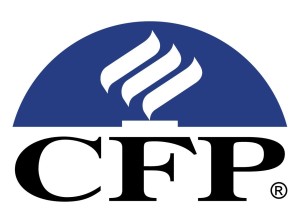 Jumping into the in-demand financial services field is infinitely simpler for individuals who have gone the extra mile to become a Certified Financial Planner (CFP). Earning the CFP credential certifies that finance professionals have the expertise to assist clients in organizing their funds, solving monetary troubles, and meeting long-term financial goals. As the large baby boomer population reaches retirement age, it’s projected that the employment of CFPs will rise with the demand for financial planning services. In fact, the Bureau of Labor Statistics predicts rapid job growth by 27 percent with 60,300 new openings through 2022. Standing out among the over 283,000 personal financial advisors in the United States can be a challenge though. Follow the step-by-step guide below to start marketing yourself as a Certified Financial Planner.
Jumping into the in-demand financial services field is infinitely simpler for individuals who have gone the extra mile to become a Certified Financial Planner (CFP). Earning the CFP credential certifies that finance professionals have the expertise to assist clients in organizing their funds, solving monetary troubles, and meeting long-term financial goals. As the large baby boomer population reaches retirement age, it’s projected that the employment of CFPs will rise with the demand for financial planning services. In fact, the Bureau of Labor Statistics predicts rapid job growth by 27 percent with 60,300 new openings through 2022. Standing out among the over 283,000 personal financial advisors in the United States can be a challenge though. Follow the step-by-step guide below to start marketing yourself as a Certified Financial Planner.
Complete a Bachelor’s Degree in Finance
Before you can even apply for the CFP program, you’ll need to hold at least a four-year bachelor’s degree in finance or a closely related major. At least 18 semester credits must be devoted to financial planning. It’s advised that students attend one of the over 300 CFP Board-Registered academic programs in the United States. Credits will only be accepted from universities that are regionally accredited. Prerequisites are mandated in insurance planning, investment analysis, income taxation, retirement planning, estate planning, and fiduciary responsibility. Completing a financial plan development capstone course is also included. These education requirement may be automatically fulfilled by individuals who have CPA, CLU, and CFA credentials or a Doctor of Business Administration.
Obtain Relevant Work Experience
After graduation, it’s time to start sharpening your financial expertise and building your resume with qualifying work experience. The CFP Board requires that candidates have at least three years of full-time work under their belts. Qualifying experience refers to the delivery of personal financial planning services to clients. Individuals can also count any experience supervising or teaching any portion of the financial planning process. In some cases, internships completed during your post-secondary education may transfer depending on the duties held. Credit will only be granted for experience within the past 10 years. There’s an exception for finance professionals who have participated in a two-year, full-time apprenticeship of 4,000 hours or more.
Pass the CFP Certification Examination
The final and perhaps most difficult step is to pass the CFP certification exam. Typically, only 50 to 60 percent of test takers receive a passing score. Over the course of 10 hours, candidates must complete 285 multiple-choice questions in three separate sessions. Exams are only given by the CFP Board in March, July, and November annually. More than 50 test centers are scattered across America. To maximize your chance of passing, it’s recommended that you sign up for a review course. Use the website’s study guides to better understand the questions and case studies presented on the exam. Most CFP students spend at least 1,000 hours studying. If necessary, you can retake the exam up to three times within a two-year period.
Related Resource: Management Jobs are in Accounting
Once you’ve passed with flying colors, you’ll have to maintain your CFP credential by paying certification fees. The CFP Board charges an annual renewal fee of $325. Although this may seem expensive, it’s worth the investment for declaring your professional capacity in financial planning and unlocking career opportunities. As a trusted Certified Financial Planner, you can market yourself to a specific niche clientele and help people form smart monetary decisions.
 Follow
Follow